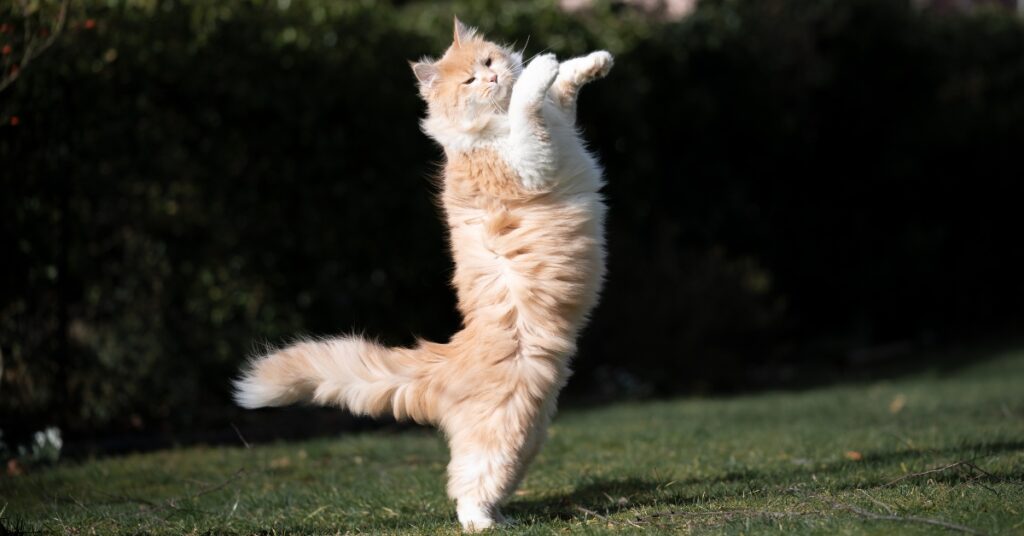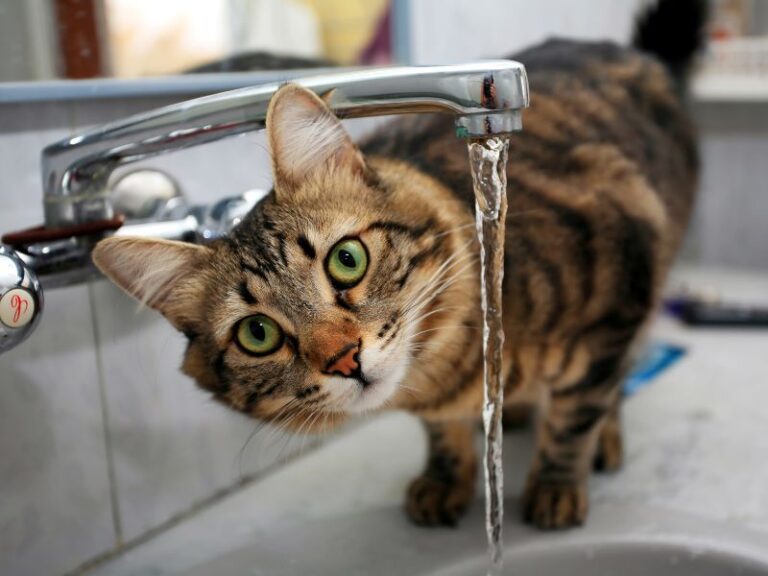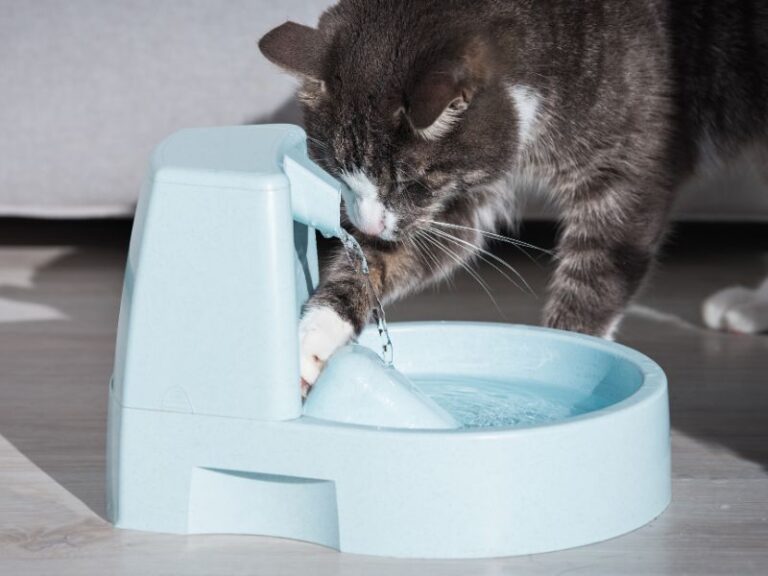Table of Contents
ToggleCat tail language is a fascinating non-verbal form of expression that holds immense significance in feline communication. Cats use their tails to convey a wide range of emotions, intentions, and feelings. Understanding this unique language is crucial for cat owners and enthusiasts to connect better with their feline friends. From the subtle flicks to the dramatic puffing, each tail movement carries a story waiting to be deciphered. In this article, we will explore the various tail positions and movements, unraveling their meanings and gaining insights into our cats’ emotions and desires. By delving into the captivating world of cat tail language, we can strengthen the bond with our whiskered companions and respond to their needs more effectively. Let’s embark on this journey of discovery to decode the secrets of cat tail language together.
Decoding Their Positions and Meanings
Understanding cat tail language is akin to deciphering a secret code that cats use to communicate with us. By paying attention to the various tail positions, we can gain valuable insights into our feline companion’s emotions and intentions. Let’s explore the significance of different tail positions and the meanings they convey:
- The Straight-Up Cat Tail:
- Vertical position indicates confidence and contentment.
- Slight curve at the tip expresses friendliness and happiness.
- The Puffed-Up Cat Tail:
- Signals fear, agitation, or feeling threatened.
- Used to appear larger and intimidating when facing potential threats.
- The Curled Cat Tail:
- Denotes relaxation and comfort.
- Wrapped around the body to show contentment and trust.
- The Twitching Cat Tail:
- Slightly twitching indicates excitement or anticipation.
- Rapid twitching may convey irritation or annoyance.
- The Wagging Cat Tail:
- A cat’s wagging tail can show mixed emotions.
- Slow wag expresses curiosity, while a fast wag indicates agitation.
- The Tucked Cat Tail:
- Sign of submission or fear.
- Tucked between hind legs when feeling threatened or anxious.
- The Lashing Cat Tail:
- Vigorous lashing signifies frustration, anger, or aggression.
- Important to recognize to prevent conflicts with the cat.
Cat Tail Movements and Their Interpretations
Cat tail language goes beyond mere positions; it also involves a repertoire of movements that reveal subtle emotions and intentions. Let’s delve into the mesmerizing world of cat tail movements and their interpretations:
Unraveling the Mysteries of Cat Tail Wagging
- Slow Wagging: Expresses curiosity and interest, often observed when the cat is exploring something new.
- Fast Wagging: Indicates agitation or unease, a sign that something may be bothering the cat.
- Context Matters: Understanding the broader situation helps interpret the message behind the wag.
The Intriguing World of Cat Tail Flicking
- Communication Through Flicks: Cats use quick tail flicks to convey various emotions, like mild irritation or uncertainty.
- Subtle Twitch: Signifies focus or alertness, showing the cat is attentive to its surroundings.
- Playtime Flicks: Cats may flick their tails during play, which can differ from flicks associated with discomfort.
Unraveling Comfort and Tension
Cat tail language is crucial for cats to communicate emotions and intentions. The curled tail reflects various feelings like contentment, tension, fear, or aggression. Decoding these messages helps us understand our feline companions better and strengthen our bond with them.
What a Curled Tail Indicates
- Various Meanings of a Curled Cat Tail: A curled tail can convey a range of emotions and moods in cats, from comfort and contentment to tension and anxiety.
- Interpreting Different Curling Positions: Different curling positions of a cat’s tail offer valuable insights into their emotional states, helping us understand their feelings better.
- The Role of Body Language in Understanding Feline Emotions: Tail curling is just one aspect of a cat’s body language, which, when observed collectively, paints a more complete picture of their emotions.
- Nurturing Trust and Comfort through Tail Observation: By paying attention to their curled tails, we can establish trust with our cats and create an environment where they feel secure and cared for.
A Closer Look at Different Curling Positions
- Relaxed and Content: A gently curled tail around the body indicates relaxation and contentment, suggesting that the cat is at ease and comfortable.
- Feeling Safe and Secure: When a cat wraps its tail around its body protectively, it signals a sense of safety and security in its surroundings.
- Mixed Emotions: Partial curling with a tense body may suggest mixed emotions, where the cat is feeling both cautious and curious.
- Nervous or Anxious: A tightly curled tail against the body indicates nervousness or anxiety, signaling that the cat might be feeling uneasy or stressed.
- Fear and Aggression: A puffed-up tail with a curl reflects fear or aggression, indicating that the cat perceives a potential threat or is ready to defend itself.
- Identifying Tail Cues: By understanding and identifying these tail cues, we can communicate more effectively with our cats and respond to their needs with empathy and care.
Understanding Fear and Aggression
When a cat’s tail is puffed up, it indicates fear and aggression. This body language is a clear sign that the cat feels threatened or is ready to defend itself. By recognizing this behavior, we can respond with care and help our feline friends feel safe and secure.
- Fear-Induced Body Language:
- Puffed-up Tail: A Visible Sign of Fear
- Raised Fur: Displaying Agitation and Alertness
- Arched Back: Demonstrating a Defensive Posture
- Defensive Posture:
- Preparing for Protection: A Defensive Stance
- Wide Eyes and Dilated Pupils: Heightened Awareness
- Ears Flattened Back: Sign of Feeling Threatened
- Understanding Anxiety:
- Identifying Triggers: Recognizing Potential Threats
- Providing Reassurance: Creating a Safe Environment
- Calming Techniques: Soothing a Fearful Cat
- Communicating Distress:
- Tail Fluff as a Warning: Deterring Potential Aggressors
- Vocalizations and Hissing: Vocal Expressions of Fear
- Defensive Actions: Avoiding Confrontation in Fearful Cats
- Tail Puffing in Aggression:
- Differentiating Fear from Aggression: Recognizing Context
- Responding to Aggression: Safety Measures for Humans and Other Pets
- Seeking Professional Help: Addressing Persistent Aggressive Behavior
Must Read >> How to Prevent and Manage Aggressive Play in Kittens

Navigating the Feline Social Context
Cat tail signals are crucial non-verbal cues used by cats to navigate their social interactions, conveying emotions, hierarchy, and affection. Understanding these tail signals allows us to interpret their social dynamics, build stronger connections with cats, and create harmonious environments in multi-cat households and human-animal relationships.
The Role of Cat Tail Language in Social Interactions
- Vital Non-Verbal Communication: Cats use their tails as a primary means to express emotions and intentions during social interactions, conveying valuable non-verbal cues.
- Establishing Hierarchy: Tail postures help establish dominance and submission among cats, playing a significant role in defining the hierarchy within a group.
- Bonding and Affection: Cats express affection and trust towards humans through their tail language, strengthening the bond between cats and their human companions.
Tail Positions During Cat-to-Cat Communication
- Upright and Friendly: An upright and relaxed tail signifies a friendly and non-threatening approach in cat-to-cat interactions.
- Slow Swishing: A slow swishing tail indicates unease or mild agitation, suggesting that the cat may be cautious or wary.
- Tucked Tail: A tucked tail is a submissive gesture, showing deference to a more dominant cat in the vicinity.
- Raised Tail with Puffed Fur: A raised tail with puffed fur is a defensive posture, typically seen in confrontations or when the cat feels threatened.
Cat Tail Gestures Towards Humans: What They Convey
- Tail Wrapped Around Legs: When a cat wraps its tail around its legs in the presence of humans, it signifies trust and comfort.
- Wagging Tail: A wagging tail in cats can indicate mixed emotions or playful excitement, depending on the context.
- Twitching Tail: A twitching tail expresses curiosity and engagement as the cat focuses its attention on something intriguing.
- Tail Fluff and Arched Back: Tail fluffing and an arched back signal fear or feeling threatened, highlighting the need for caution and reassurance.
Read More >> Understanding cat body language and behavior
Misconceptions and Common Mistakes
Misconceptions and Common Mistakes: Dispelling misunderstandings about cat tail language, addressing common errors made by cat owners, and promoting a more accurate understanding to strengthen the bond with feline companions.
Dispelling Misunderstandings About Cat Tail Language
- Tail Wagging Always Means Happiness: Tail wagging in cats can signify various emotions, not just happiness, and it’s essential to recognize the context to accurately interpret their feelings.
- Puffed-up Tail Equals Aggression: A puffed-up tail can indicate fear or aggression, and discerning between the two is vital to respond appropriately to the cat’s emotional state.
- Tucked Tail Indicates Guilt: A tucked tail is often a sign of fear or submission, and attributing it to guilt is a common mistake in understanding cat body language.
Common Tail Language Errors
- Ignoring Context: Observing the cat’s entire body language, not just the tail, is essential to grasp the true meaning behind their communication.
- Overlooking Individual Differences: Each cat may have unique tail expressions, so understanding the individual cat’s patterns is crucial for accurate interpretation.
- Applying Dog Tail Language to Cats: Cat and dog tail language differ significantly, and it’s vital to recognize these species-specific distinctions when interpreting their behaviors.
Final Words
The beauty of non-verbal communication is exemplified through the intricate language of cat tails. As cat owners embrace and decipher these subtle cues, they find themselves forging stronger bonds with their feline companions. From expressing curiosity and playfulness to unveiling anxiety and fear, cat tail language becomes a powerful tool in understanding our beloved pets’ emotions and needs. By nurturing this profound connection, we create a harmonious and enriched environment for both cats and humans, fostering a deeper understanding and appreciation for the extraordinary relationship we share with our feline friends.






